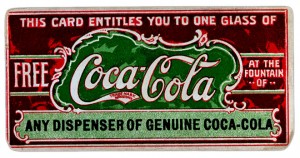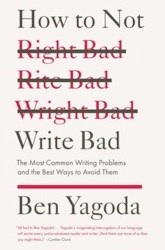Daylight saving time – or “spring forward” – begins this Sunday. While we’re not sure how “losing” an hour saves us anything, we were inspired to explore another way one may save: through coupons. Our explorations opened a whole world of couponing lingo. Our 10 favorites are here.
blinkie
“Next comes a bag of cherry tomatoes and three jars of Peter Pan creamy peanut butter, free with a doubled coupon—called a blinkie because it was dispensed from one of the blinking coupon boxes installed in grocery store aisles.”
Matt Schwartz, “Bargain Junkies Are Beating Retailers at Their Own Game,” Wired, November 29, 2010
Blinkies are a type of coupon dispensed from a machine in a store aisle or at checkout. The machine generally has a blinking red light designed to get shoppers’ attention.
A blinkie is also “a small animated graphic for use on a webpage, usually taking the form of picture or phrase with blinking lights around it.”
BOGO
“They decide which numbers will be most enticing, and whether ‘50% off’ sounds better than ‘buy one get one’ offers—known as ‘BOGO,’ in industry parlance.”
Carl Bialik, Elizabeth Holmes, and Ray A. Smith, “Many Discounts, Few Deals,” The Wall Street Journal, December 15, 2010
BOGO stands for “buy one get one (free).” The earliest citations we could find for BOGO were the early 1990s, although the acronym could be older than that.
catalina
“If you’ve shopped for groceries at a large supermarket, you’ve undoubtedly noticed the long ‘string’ of coupons that print out at the register along with your store receipt. These checkout coupons, or ‘Catalinas,’ as coupon shoppers commonly call them, are incredibly valuable to coupon shoppers.”
Jill Cataldo, “How ‘Catalina’ Coupons Help You Save,” The Eagle Tribune, May 7, 2010
A catalina coupon is printed at the register after purchase, and is named for the marketing firm behind the idea.
extreme couponing
“The advent of extreme couponing, popularized by the TLC show of the same name about people who clip coupons obsessively, is sparking a backlash as some manufacturers and retailers complain that the pursuit of a big bargain has an ugly side.”
Allison Linn, “Extreme Couponing Sparks Backlash,” NBC News, September 15, 2011
A Wall Street Journal article from March 8, 2010 seems to be the first to mention the term extreme couponers, or “discount devotees [who] have formed vast online communities that collectively unearth and swap digital, mobile-phone and paper coupons,” combining “dozens of coupons and [going] from store to store buying items in quantity, getting stuff free of charge.” The TLC reality show, Extreme Couponing, debuted in December 2010.
Extreme couponing is a play on the phrase, extreme sport, a sport featuring a level of exertion and danger. According to the Oxford English Dictionary (OED), extreme sport originated in 1989 in Skiing Trade News, although a book called Seventh Grade: Most Extreme Climbing was published in 1974.
meal ticket
“The government was down to its last bean and wondering where the Heck its next meal-ticket was coming from, when in blows Mr. Man, tucks up his shirt-sleeves, and starts the tables.”
P.G. Wodehouse, The Prince and Betty, 1912
While we now mainly think of meal ticket in its figurative sense – “a person or thing depended on as a source of financial support” – it originally referred to “a card or ticket entitling the holder to a meal or meals,” often at a discount.
Meal tickets originated around 1870 and seemed to be given out to single men and women known as mealers, those who ate in one place and lodged in another. The figurative sense arose around 1899.
peelie
“Try to find one with the sticker coupon (also called a ‘peelie’) to save 50 cents and get it free after doubled coupon.”
Michelle Dudas, “Smart Savings: Clip Coupons, Save for Education,” Fay Observer, December 31, 2011
A peelie is a coupon peeled from the item’s packaging. According to the OED, peelie, or peely-wally, is Scottish slang for “thin; gaunt; pale.” Peelie may be an alteration of pale.
rain check
“So often the store will run out of a sale item and issue a rain check to be used at a later date. . . .The stores certainly honor rain checks, but will not accept the now-expired coupon.”
Jan Leasure, “Store’s Rain-Check Policy Makes Coupon Useless,” The Telegraph, December 8, 1993
The earliest meaning of rain check originated around 1884 and referred to tickets or coupons given to spectators at rained-out baseball games. The figurative meaning of “a promise that an unaccepted offer will be renewed in the future” arose around 1899, says the OED.
The consumer meaning – “an assurance to a customer that an item on sale that is sold out or out of stock may be purchased later at the sale price” – is the newest, coming about around 1955. (The time after World War II led to “mass consumption frenzy.”)
stackable
“With fast-ending sales, stackable coupons and online-only discounts, in-store shoppers often have good reason to question whether the price they see is really the best deal out there.”
Kelli Grant, “App Savvy,” CBS News, April 2, 2012
Stackable coupons are those that can be combined with other coupons and discounts.
stockpile
“We get a glimpse at the couponer’s stockpile. The warehouse-like space usually contains 1,568 bottles of soap, 934 frozen dinners and 6,237 bags of kitty litter. . . .Frightening? Yep. But it’s also a little appealing, especially when you watch the show’s featured couponers pay double digits for a stockpile with a triple-digit price tag.”
Sonya Sorich, “Extreme Couponing on TLC Is a Little Too Extreme,” Ledger-Enquirer, September 27, 2011
Stockpile originated as a U.S. mining term in 1872, says the OED, and referred to “a pile of coal or ore accumulated at the surface after having been mined.” In the early 1940s, the word came to mean “a supply stored for future use,” as well as specifically “an accumulation of nuclear weapons.” Stockpile may also be used as verb meaning “to accumulate and maintain a supply of for future use.”
twofer
“The twofer deal involves a certain expense to producers in the matter of distribution of ‘coupons’ redeemable at the box office on the basis of two tickets for the price of one.”
“Public Likes Bargain Price,” Beaver County Times, October 21, 1974
Twofer, short for “two for (a dollar, etc.),” originated around 1911 as U.S. slang for a cheap cigar, according to the OED, “a cigar sold at two for a quarter.” The coupon meaning, attested to 1948, at first referred specifically to tickets for a play, but now seems to refer to any two for one discount, as well as “an offer, a deal, or an arrangement in which a single expense yields a dual return.”
Twofer used to mean “one who belongs to two minority groups and can be counted, as by an employer, as part of two quotas,” arose around 1969.
[Photo: “Low Prices Everyday,” CC BY 2.0 by _tar0_]
[Photo: “Coca-Cola,” Wired Magazine]






